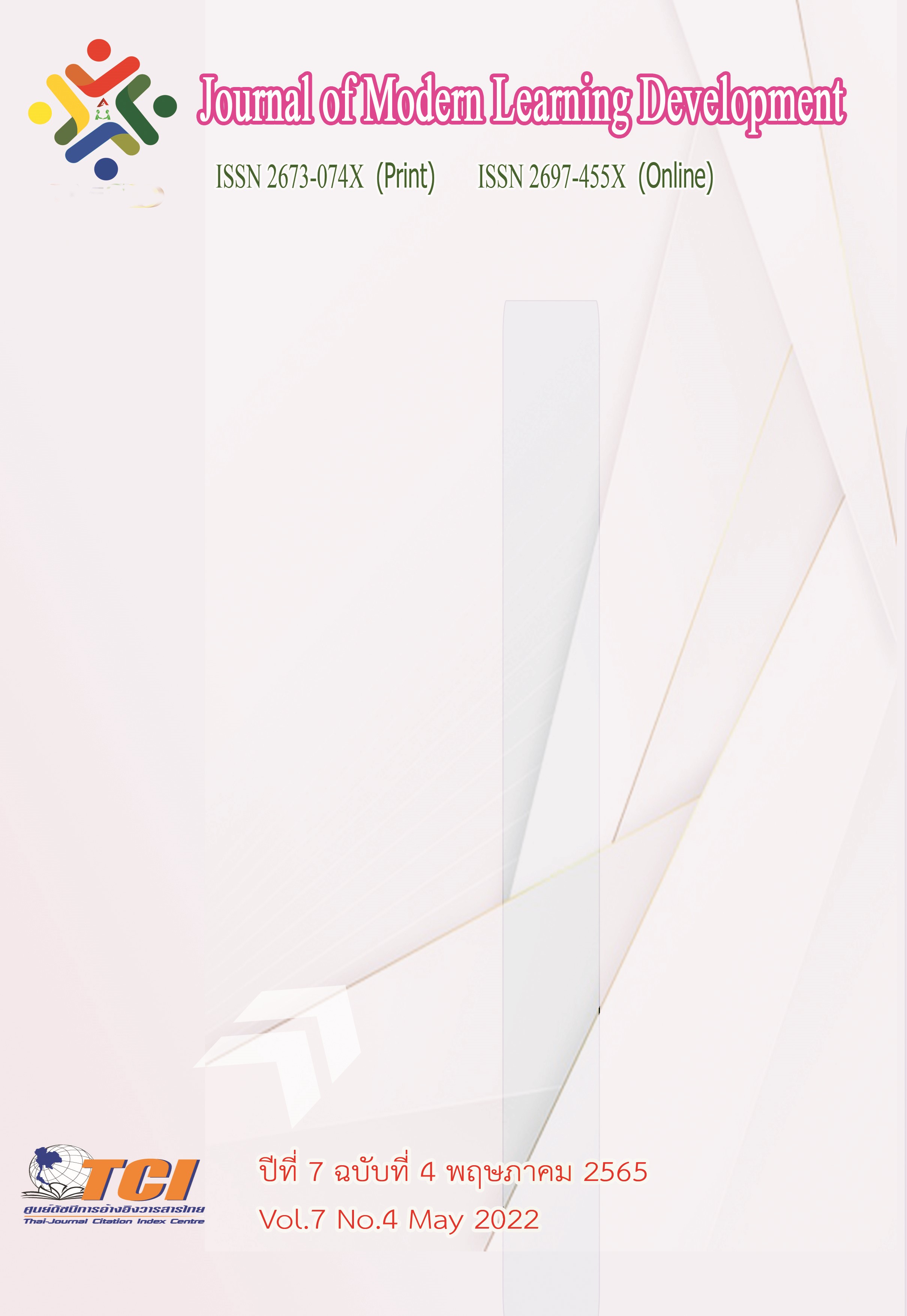Phra That Phanom Worship Ceremony : Integration of Promote Learning for Social Studies, Religions and Cultures
Main Article Content
Abstract
Phra That Phanom Worship Ceremony is Worshiping Phra That Phanom is an important tradition in Nakhon Phanom Province. Because Phra That Phanom is a sacred place of worship. It is at Wat Phra That Phanom Woramahawihan, That Phanom District, Nakhon Phanom Province. It is a Mondop-shaped chedi or a square-shaped chedi. It is a Mondop-shaped Chedi or a square-shaped caddy. It is worshiped by the people of the Nakhon Phanom Province. And people in general who have faith. This research aims to; 1) The Study was to study the history and origins of Phra That Phanom worship tradition and 2) Integration by promoting learning in social studies, religions and cultures. In this research is a qualitative research method. The research sample size of 100 people. The purposive sampling groups were used as follows: 1) the key informants 2) the casual informants and 3) the general group. The tools for data collection were surveyed, observation, interview and focus group discussion. The data were checked, analyzed according to the given objectives, with the triangulation technique, and the results of the study were presented in a descriptive analysis.
The research findings were as follows: 1) Study was to study the history and origins of Phra That Phanom worship tradition. It is found that the Phra That Phanom Worship Ceremony was held every year. As a result of Phra That Phanom has deteriorated in the year 2444 B.E. has been restored and asking people to donate factors that contribute to the restoration of Phra That Phanom. Therefore, the day of the 8th waxing moon of the 3rd lunar month to the first waning day of the 3rd lunar month is a tradition to worship Phra That Phanom. and 2) Integration to promote learning in social studies, religions and cultures. It is found Phra That Phanom worship ceremony can integration to promote learning by using an integrated approach in accordance with the learning standards in each subject divided according to the learning content into 5subjects as follows: 1)Religion, morality and ethics 2) Civics, culture and living in society 3)Economics 4)History and 5)Geography. Knowledge and understanding of the history, the importance, the Masters and the moral principles of Buddhism. Understanding of the culture ability of managing resource utilization of limited resources available for leading a balanced life in economic principles and understanding of local history. As well as being able to present Geo-informatics in the conservation of Phra That Phanom worship tradition. The using all 5 subjects content to design the learning process. And learning activities in accordance with the context or the interests of the learners on the basis of individual differences under the integration of the Phra That Phanom worship tradition in social studies, religions and cultures.
Article Details
References
กระทรวงวัฒนธรรม. (2559). วัฒนธรรม วิถีชีวิตและภูมิปัญญา. กรุงเทพมหานคร: รุ่งศิลป์การพิมพ์ (1977) .จำกัด.
กระทรวงศึกษาธิการ. (2542). พระราชบัญญัติการศึกษาแห่งชาติ พุทธศักราช 2542. กรุงเทพมหานคร: บริษัทสยามสปอรต์ซินดิเคท จำกัด.
กระทรวงศึกษาธิการ. (2563). หลักสูตรแกนกลางการศึกษาขั้นพื้นฐาน พุทธศักราช 2551 และมาตรฐาน การเรียนรู้และตัวชี้วัดฯ (ฉบับปรับปรุง พ.ศ. 2560). กรุงเทพมหานคร: โรงพิมพ์ชุมนุมสหกรณ์การเกษตรแห่งประเทศไทย.
กรมส่งเสริมวัฒนธรรม. (2561). มรดกภูมิปัญญาอีสาน. กรุงเทพมหานคร: กระทรวงวัฒนธรรม.
ณัฏฐ์วัฒน์ อนันตะสุข.(2564). มโนทัศน์ว่าด้วยการสอนภูมิศาสตร์แนวใหม่ เพื่อการรู้เรื่องภูมิศาสตร์ของนักเรียนระดับการศึกษาขั้นพื้นฐาน. วารสารศึกษาศาสตร์ มหาวิทยาลัยมหาสารคาม. 15 (2), 7-21.
พระเทพรัตนโมลี (แก้ว อุทุมมาลา). (2560). พระธาตุพนม (พิมพ์ครั้งที่ 3) ปรับปรุงใหม่. นนทบุรี: มติชน ปากเกร็ด.
พระมหาบุญนำ ปรกฺกโม (คนหมั่น). (2560). การศึกษาวิเคราะห์ความเชื่อและการบูชาพระธาตุของชาวพุทธในล้านช้าง. ดุษฎีนิพนธ์พุทธศาสตรดุษฎีบัณฑิต สาขาวิชาพระพุทธศาสนา. บัณฑิตวิทยาลัย: มหาวิทยาลัยมหาจุฬาลงกรณราชวิทยาลัย.
พัชรินทร์ รุจิรานุกูล และสุรีย์มาศ สุขกสิ. (2560). แนวทางส่งเสริมการจัดการเรียนรู้สังคมศึกษาในสาระศาสนาศีลธรรมและจริยธรรมของครูโรงเรียนสังกัดสำนักงานเขตพื้นที่การศึกษาประถมศึกษาจันทบุรี. จันทบุรี: มหาวิทยาลัยราชภัฏรำไพพรรณี.
วิภาดา พินลา. (2560). เทคนิคการจัดการเรียนรู้ประวัติศาสตร์สำหรับครูสังคมศึกษาในยุคคริสต์ศตวรรษที่ 21. วารสารปาริชาต. 30 (2), 1-19.
วิภาพรรณ พินลา. (2559). แนวทางการจัดการเรียนรู้วิชาสังคมศึกษาตามแนวปรัชญาของเศรษฐกิจพอเพียง เพื่อส่งเสริมทักษะการเรียนรู้ของผู้เรียนในศตวรรษที่ 21. วารสารวิชาการ Veridian E–Journal, Silpakorn University ฉบับภาษาไทย สาขามนุษยศาสตร์ สังคมศาสตร์ และศิลปะ. 9 (2), 1140-1157.


